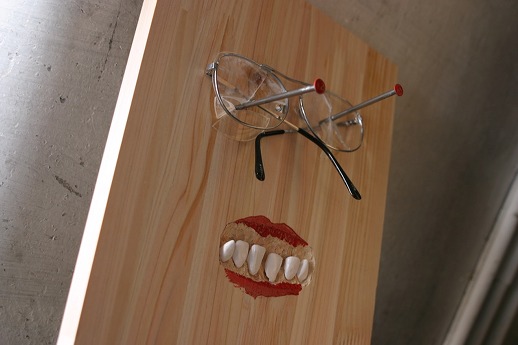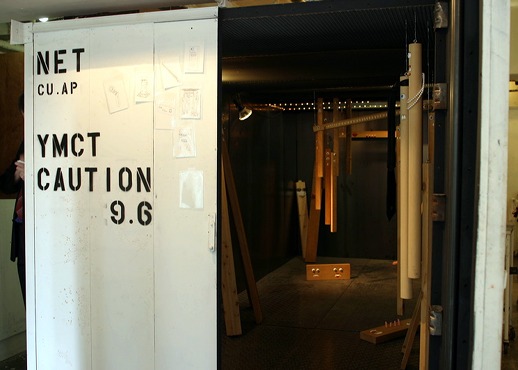This working life
Finding absurdity in the working world is the theme of Jack McLean’s newest art works. For over a decade, the Tokyo resident has initiated many public art performances and social interventions around the city and around the world. Late last year, as a kind of social experiment, McLean took up employment at a large corporation to find new inspiration. As terribly bourgeois as that sounds, the resulting drawings and sculptural works come from the daily grind; the reality of working hard in the proverbial “salt mine”.
This is the first exhibition held in The Container, a new art space to be found inside Nakameguro’s Bross hair salon. Curator Shai Ohayan plans to use the space to display works by some of Tokyo’s most interesting artists. The Container is quite literally a shipping container that has been dumped inside a shopfront. Visitors are welcome to come into the hairdresser’s and have a look inside the unusual gallery. The shipping container is, of course, a rather cramped space — very different to the pristine, white cube experiences of other galleries — but if you are bold enough, it is a space in which to walk around inside and become more closely acquainted with the display.
McLean describes his experience with corporate Japan as working long hours for little pay or appreciation. However, unlike his exploited, foreign-born co-workers, McLean considers it a rich source of artistic inspiration. He drew many, many sketches of people he would encounter during his workday — OLs, salarymen, day labourers — and extracted the essences of his impressions.

The resulting drawings and sculptures feature many humorous, manic, or anguished faces. They stare out at you, with their lidless eyes and lipless teeth, with muted anguish or blank stupidity. The space is also filled with many vertical timber sleepers that feature the same eyes, teeth and other random body parts as the illustrations. They have titles like ‘One Eye Bastard’ and ‘Tart Up’. These sculptures are very accurate translations of the sketches and they function to reinforce the idea of these characters as having been “nailed into place” by their jobs.
Looking back on a long career primarily characterized by often mischievous public performances and social interventions, McLean’s art has often been about his distance from other people. The awkwardness between the artist and the public; with the law; with the art institution; is made a key feature. He has always provoked new and unusual interactions with strangers that may otherwise not have happened. In this context, it doesn’t seem so outrageous that his next step was to take a job. It wasn’t for the money, or the Japanese sense of belonging to a greater organism than just one’s self or one’s family, but to have a go at being one of the little cogs in the wheels of the modern world. For a change. For a laugh. For no better reason than art.

Twenty-five per cent of all sales of works featured in this exhibition will be donated towards the relief efforts in Tohoku following the March 11 earthquake and tsunami.
Emily Wakeling
Emily Wakeling



